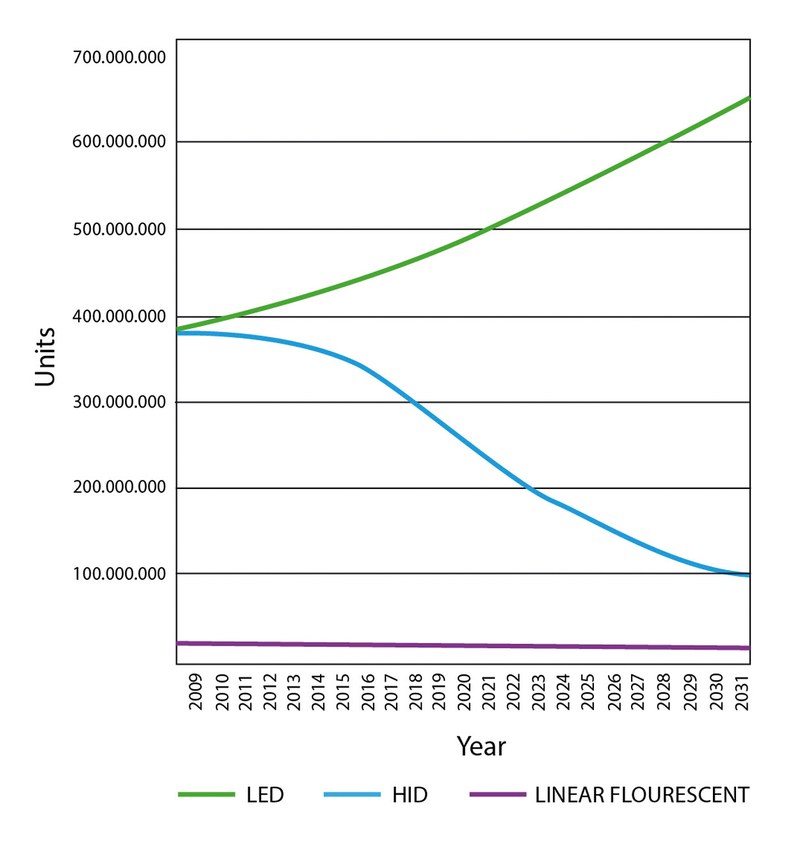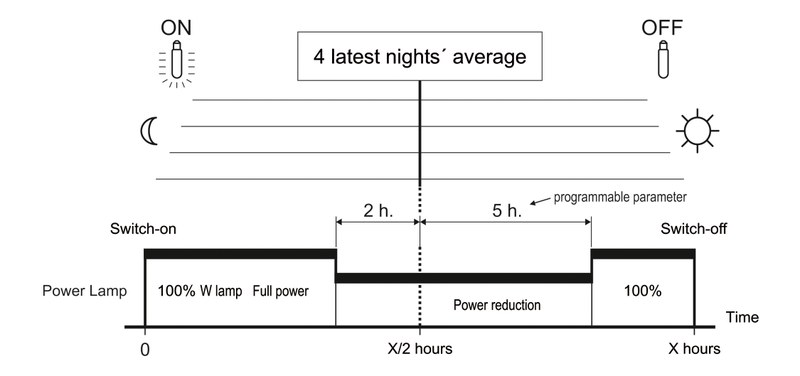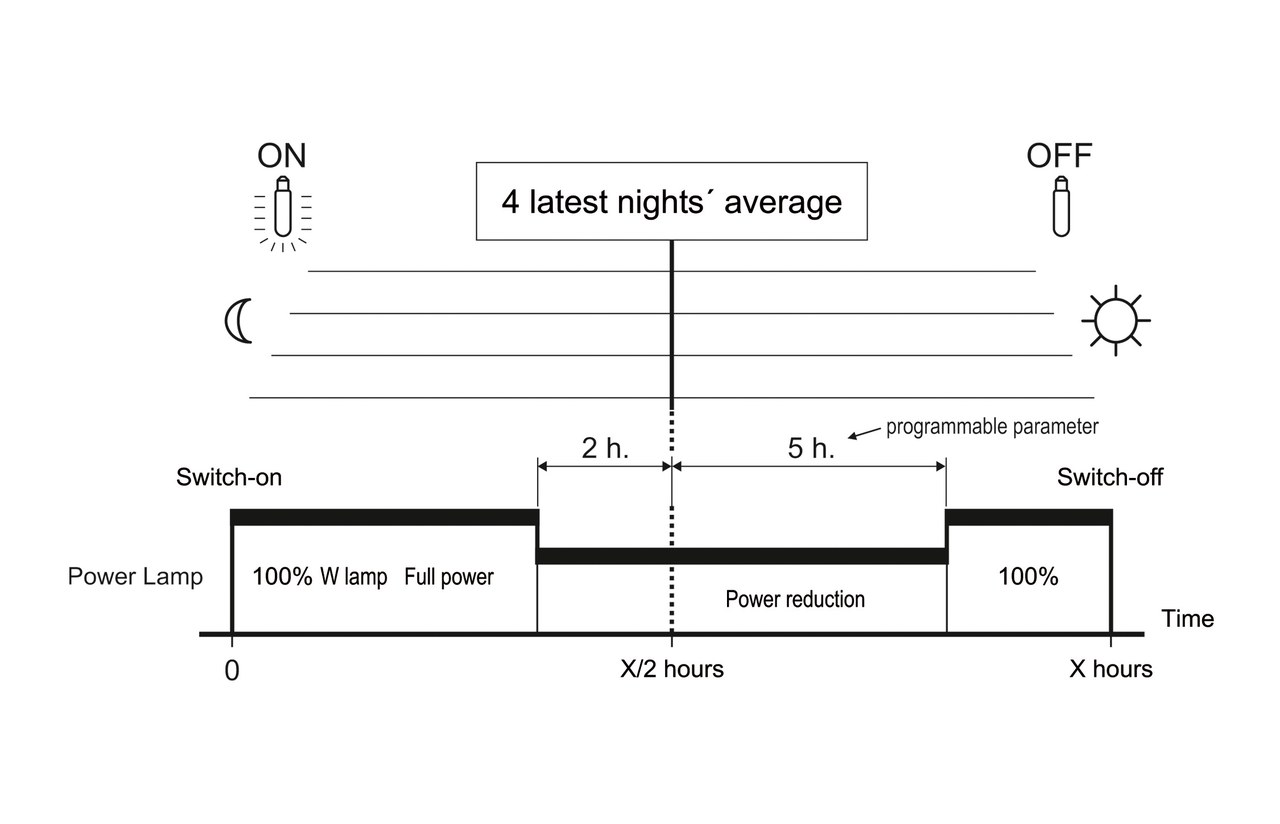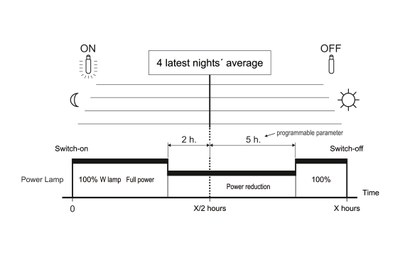Street Lighting Evolution through LED Technology
Standard electronics is usually based on a relatively simple straight-forward technology. Outdoor lighting is more challenging in several aspects, especially robustness. This is also true for the electronics. Sandra Solán, R & D Manager from ELT Electronic Division has studied this technology in depth. To celebrate the IYL 2015 she will explain technical advances, benefits, strengths and technical challenges of current and future street lighting systems for an electronics manufacturer.
We are living in a new and exciting era of changes regarding outdoor lighting. Major changes are being experienced in most of the cities as a result of the technological advances which are being promoted by the lighting industry. Nowadays, those responsible for lighting in cities looking for a high quality light committed to the new values of the 21st century, such as energy efficiency or eco- friendly designs. This means that a street light is no longer that point of light that used to illuminate and had no further interaction than a simple ON/OFF. Now, it has become a dynamic point of light with the possibility of adapting to the user’s needs regardless of the date or place where it is installed.
Manufacturing processes and designs have radically changed in last 5 years because of dynamics in the LED industry. These changes have forced electronic manufacturers to modify R&D and Industrial Departments in order to be able to face the new design challenges. A few years ago the R&D departments had expertise in power electronics and dominated topologies as the Buck Boost, Half and Full bridge topology, with skills in microprocessors programming or ASICs designing. Currently, knowledge of power electronics has to be critical. New topologies as Flyback, Buck or resonant LLC converters have appeared requiring greater precision in the magnetics design. For the trendiest LED driver designs, power electronics is the trunk of a tree whose branches are new technologies such as digital communication, telecommunications or the internet connectivity. This is a challenge for companies in which experts in telecommunications, software and firmware developers and experts in mobile technologies should be incorporated to their research groups.
Regulations & Requirements
Factors such as energy saving, CO2 emissions reduction or the use of eco-friendly designs that are recyclable and are manufactured according to the latest directives without including prohibited materials like mercury, are intended to be implemented in a few years in each country or State by means of directives, regulations or standards. For example, since 2008 in Spain there is the Royal Decree 1890/2008 of 14 November, about the regulation of energy efficiency in outdoor lighting installations, and that requires the regulation of lighting in low traffic hours for installations of more than 5 kW.
In the same way, in 2017 the new regulation of energy efficiency 347/210 will become effective in Europe. This regulation will establish compliance of a greater energy efficiency than the existing (EEI=A2) and it will probably mean the beginning of the electronic control gears up to 150 W instead of conventional ballast.
This is the very moment in which electronic control gears became really important in outdoor lighting. In former years, most of the outdoor lighting systems were made with high-intensity discharge lamp technology and conventional ballasts. Electronics were installed as auxiliary equipment for conventional ballasts to allow double power level and reduce energy consumption. Afterwards, the integrated solution appeared on the market: ballast and dimming system in the same electronic control gear, which provided greater energy efficiency and longer life lamps, reducing costs in terms of energy consumption and maintenance service. Finally, LED technology has been the one which has definitely revolutionized outdoor lighting, turning from a conventional street lighting fixture into an efficient and intelligent point of light. The constant improvement in the field of LEDs has improved the performance of the luminaires in terms of lm/W. Also, the constant upturn of the optics has made it possible to manage the light to where one wants to illuminate, taking advantage of most of the luminous flux and obtaining significant energy savings. Adding the long lifetime of the whole system, one can find out an optimal solution for public lighting that allows councils to be more environmentally friendly and respectful.
Figure 1: Global lamp installed base in street lighting & illuminated traffic signs by lamp technology (Source: Datapoint Reseach from Global General Lighting Market)
Global lamp installed base in street lighting & illuminated traffic signs by lamp technology (Source: Datapoint Reseach from Global General Lighting Market)
Efficiency
There is a new challenge for electronic equipment manufacturers in designing and manufacturing rugged and reliable solutions with the least possible energy losses. In addition to this, they should take into account and take care of other aspects like constant current to the output waveform, since it affects the LED luminous efficiency. The higher the output ripple current, the lower the light efficiency. For example, comparing lumens output in the same module driven by a control gear with an output current ripple of 35%, LED module luminosity is 16% less than if the LED module is driven by a control gear with an output current ripple of 3%. Some countries are already demanding less than 5% output current ripple.

Figures 2&3: Normally, a flyback stage without primary regulating stages has a big output current ripple. The ripple can be compensated by electrolytic capacitors acting as components that store energy
Robust Design and the Right Topology
Electronic equipment designed for street lighting is robust when they suffer no damage in extreme operating conditions. Therefore it is very important to incorporate protection against lightning and over voltages, thermal protection to prevent overheating situations under abnormal operation or cases in which the equipment is improperly installed or protection against humidity, putting the printed circuit board where electronic components are mounted.
 Figure 3
Figure 3
The reliability of electronic equipment begins in R&D with a good electronic design and a correct choice of components, and ends with manufacturing processes using a high quality control. A good failure rate of 0.2% of failures every 1000 hours of operation can be considered.
Good energy efficiency in electronics is achieved when the chosen topology is the correct one and the design of the components is optimized. Considering a design with an isolated topology (galvanic isolation between primary and secondary side), one usually thinks of a Quasiresonant Flyback converter up to 150 W output power reaching efficiencies of about 92%. For higher output values, it is recommended to design with a resonant output stage, for example, an LLC converter. In this case one can get up to 95% efficiency with an output of 400 W power. Both of the cases have similar key points in the design, as a good choice for switching components or the optimal design of the magnetics, essential to good energy efficiency.
In addition, the great challenge in terms of lifetime of the whole system is that the life of any electronic equipment has to be equal to or above the LED module. To get this, the use of film instead of electrolytic capacitors is a must.

Figure 4: Parking function: A dimming system that controls the light level when a presence is detected by a conventional mains on/ off sensor, connected to the DALI/Touch and DIM connection. Output levels, delay time or fade time are all fully programmable by the end user
Smart Controllability & Intelligence
Basic Controls
Comparing the different technologies used in street lighting, the first advantages of LED technology that come to mind are light efficiency, long lifetime, the high quality of light with CRIs between 70 and 90, and the high percentage of the luminous flux throughout the life of the module. But in addition to these features, LED brings along other advantages over other technologies such as sodium high pressure or metal halide lamps that make the use of this technology more inviting. First, LED technology gives 100% of the required luminous flux from the first switch-on moment, avoiding having to turn the streetlight on a few minutes earlier.
In addition, in the event that a soft-start is required, LED control gears allow configuring all possible turn on ramp parameters. On the other hand, LED can be dimmed down to 1%, having the possibility to dim the light in the desired range and down to a percentage very low in required situations, for example, car parks or public parks providing greater energy savings when presence is not detected (parking functionality).
Advanced Controls
Beyond the benefits of this technology in terms of energy efficiency and lifetime of the control gear, LED has been accompanied by electronics that gives the luminaire with the ability to handle light “à la carte”. Depending on the needs of the client, each point of light can be configured to adjust dynamically to the night length (SMI System), handling it with a command line (AC, DC or Touch systems) or even to dim a set of luminaires depending on presence detection by sensors. In control gears with the SMI system configured, the mains switch-on and switch-off is controlled by the photocell or astronomic clock and the control gear makes the light level dimming automatically. The control gear’s microprocessor measures and memorizes the duration of the previous four nights. With this data it calculates the average “on” period necessary to establish its medium time point. Reduced levels are then activated some hours before and after this medium time point. These parameters are completely programmable.
Throughout 2015, leading manufacturers of electronic equipment for lighting will offer drivers for LEDs fully programmable by the user. That means that parameters such as the current output, turn-on time and fade, LED module thermal protection or lumen level maintenance (LLM) option will be fully configurable by the end user in a fast and easy way. In addition, different methods of regulation may be selected, with the possibility to connect sensors, maintenance notices when approaching the end of life electronic equipment or LED modules, etc.

Figures 5&6: SMI technologies with astronomical response has automatic changeover to lower light levels
Intelligent High End Controls
One step further up in the technological scale are the wireless lighting systems. The wireless management allows for participating on a bi-directional communication channel to control each point of light and obtain information about it as the status of the LED module, the network, consumption, etc. in real time. It is just not about providing a greater flux, more efficient and with a higher quality, but also about supplying when necessary, just in the desired when and where, allowing the best and greatest energy savings for councils and the most comfortable atmosphere for citizens. The point-to-point wireless management gives us the chance for complete control over the installation to save energy and maintenance costs.

Figure 6

Figures 7&8: Leading equipment manufacturers will offer their own software to program electronic control gears (left). Lumen Level Maintenance - this feature allows for the gradual increase of the light level over time to compensate for known luminous flux depreciation of the LED module (right)

Figure 8
Conclusions
When technology seems to reach the highest peak in public lighting, the question of how future lighting is evolving arises as well as other questions about the importance of lighting in future cities and the kind of new features that will be included. The answers can be found in the concept of the “Smart Cities”. At the same time, other dreams come along like being able to manage all the city services from the same system, something that has always been on the lighting professionals’ mind. However, the success derived from integrating all these possibilities in lighting will come not only from those research groups that have key ideas, but also from the companies’ ability for getting new strategic partnerships and also from developing and imagining new innovative and, up until now, unimaginable solutions.


